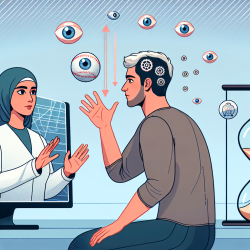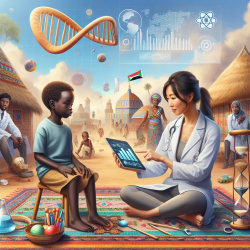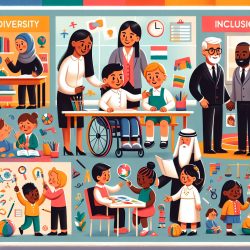Introduction
In the realm of materials science, the quest for developing materials that can withstand harsh environments, such as those found in nuclear reactors, is of paramount importance. A recent study titled "Structural responses of metallic glasses under neutron irradiation" provides intriguing insights into how metallic glasses (MGs) respond to neutron irradiation. This blog aims to explore these findings and discuss how they can be leveraged by practitioners, especially those involved in speech language pathology and online therapy services, like those provided by TinyEYE, to enhance their understanding and potentially guide further research.
Understanding the Study
The study investigates the structural responses of neutron irradiation in metallic glasses, specifically focusing on ZrCu amorphous alloys. Unlike crystalline materials, which suffer from permanent defects due to irradiation, MGs exhibit unique structural responses. The research highlights that while neutron irradiation can induce transient vacancy-like defects in MGs, these defects are fully annihilated after structural relaxation through the rearrangement of free volumes. This phenomenon is particularly significant around Zr atoms rather than Cu centers, suggesting a strategy for identifying materials with high structural stability against neutron irradiation.
Implications for Practitioners
For practitioners in fields such as speech language pathology, the implications of this study may not be immediately apparent. However, the underlying principles of structural resilience and adaptability can be metaphorically applied to therapeutic practices. Here are a few ways practitioners can draw parallels and improve their skills:
- Adaptability: Just as MGs adapt to irradiation by rearranging their internal structure, practitioners can enhance their adaptability by continuously updating their therapeutic approaches based on new research and data-driven insights.
- Resilience: The self-healing nature of MGs under stress can inspire practitioners to build resilience in their practice, ensuring that they can effectively manage and recover from challenges.
- Innovation: The study encourages the exploration of new materials with unique properties. Similarly, practitioners should be open to innovative methods and technologies that can improve therapy outcomes.
Encouraging Further Research
The study opens up several avenues for further research, particularly in understanding the microstructural mechanisms that contribute to the irradiation resistance of MGs. Practitioners can take inspiration from this research to explore new therapeutic techniques or interventions that could lead to better outcomes for children receiving online therapy services.
To delve deeper into the original research, practitioners are encouraged to read the full paper: Structural responses of metallic glasses under neutron irradiation.
Conclusion
In conclusion, while the study of metallic glasses under neutron irradiation may seem distant from the field of speech language pathology, the principles of adaptability, resilience, and innovation are universally applicable. By drawing parallels between materials science and therapeutic practices, practitioners can enhance their skills and contribute to the development of more effective online therapy services.










